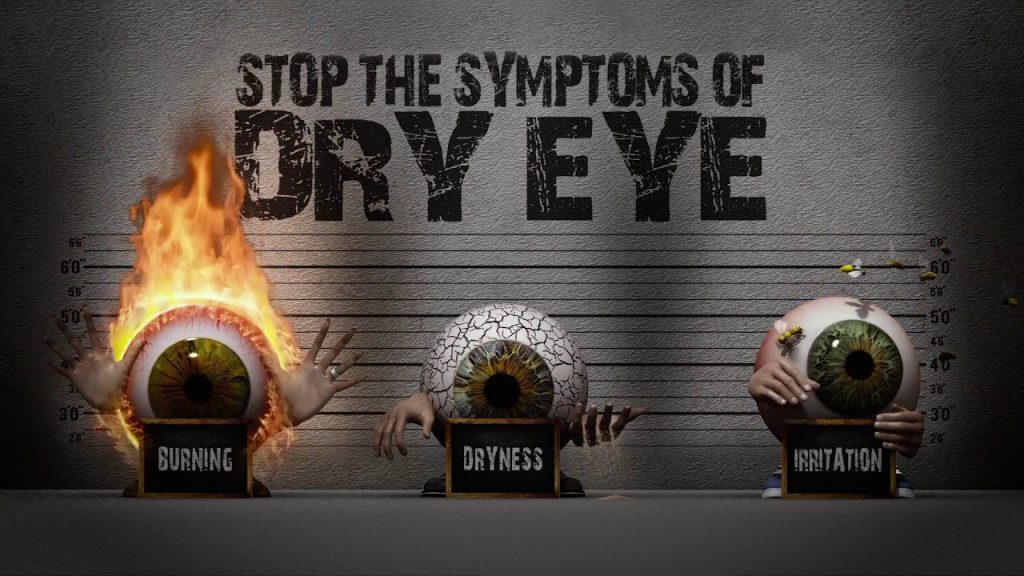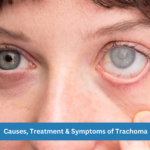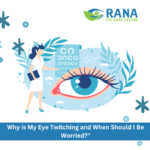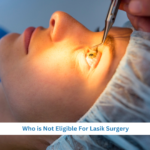Dry Eye Syndrome – Symptoms, Causes & Treatments
Dry eye syndrome is a common condition that occurs when your tears system are not working properly. It can due to either to disturbance in your tear secretion (Tear deficiency) or disturbance in your tear excretion (Excessive evaporation) which lead to the damage to the ocular surfaces (eyelid conjunctiva, and cornea) and to feel uncomfortable because of inadequate lubrication for your eyes. Usually affecting both eyes (bilateral).
Tears are produced by special glands in and around your eyes, spread by blinking reflex and they consist of water, Oils, Mucus, antibodies and special proteins which are playing greater roles in our eyes by providing moisture and lubrication to the ocular surfaces, washing away debris and dust,preventing infections, providing nutrition to the cornea and to maintain smooth surface for clear vision (Optical function).Dry eye can results from anything that can change normal production ,drainage and compositions of tears.
Symptoms of Dry Eye
They are vary from person to person but generally include:
- Burning, sandy, stickiness, gritty sensations
- Feeling like having something into the eye
- Irritation and redness
- sometimes excessive tear
- Mild to moderate blurred vision
- Painful eye in the moderate to severe case
- Feeling heavy eyelids and eyestrain
- Sensitive to light (Photophobia)
- Stringy mucus discharge usually at the corners of the eyes (inner and outer canthus).
- Problem wearing contact lens
- Fewer tears when feeling crying or emotional
- Difficult for prolonged visual work (using computer, screen, driving).
- Feeling fatigue at the end of the day
Clinical manifestation of Dry eye
- Insufficient quantity of tear (Tear meniscus) seen at the inferior eyelid as the normal meniscus should be at least 1mm in height and have a convex shape ( curved).
- Reduced tear break time (time between last break and appearance of tear film defect/ dry spot by using fluorescein stain).The normal TBT is above 10 seconds.
- Punctate corneal or conjunctival stain is positive especially at inferior or interpalpebralarea with Fluorescein, Rose Bengal or lissamine green.
- Tear film surface loses its smoothness and excessive mucus ,debris may be seen in the tear film and filaments on the cornea in severe cases
Causes of Dry eye
The causes of dry eye can be discussed into three categories: Decreased tear secretion, Excessive evaporation of tear and Tear film components misbalancing.
Decreased tear secretion
Dry eyes can occur when secretory apparatus of your eye is not producing enough tears, means that it is out of order of the normal production which may due to the various following causes:
- Age related or Idiopathic: Commonly found in menopausal and postmenopausal women.
- Connective tissue diseases: Sjogren’ssyndrome, rheumatoidarthritis, Wegenergranulomatosis, systemic lupus erythematous
- Certain Drugs:Birth control pills, antihistamines, beta-blockers, Phenothiazine, Atropine, decongestants, blood pressure control drugs, drugs for Parkinson’s disease.
- Inflammation or infiltration of the lacrimation gland:caused by tumor, sarcoidosis,Etc.
- Post radiation damage of lacrimal gland.
- Post refractive eye surgery usually Laser in situ keratomileusis (LASIK): may damage the cornea nerves and interference with normal reflex secretion.
Excessive evaporation of tear
- Excessive tear evaporation most common is due to obstruction or abnormal functional of lid glands called ‘’Meibomian Glands ‘’.These glands are responsible of producing Oil layer of tear film which has a great role of preventing evaporation of tear and it is the coat of tear film as it is first layer which is directly contact with the environment.85% of dry eye syndrome is due to the dysfunction of the above gland.Thiscan due:Age: (Impact of getting older), certain diseases like acne rosacea, blepharitis, multiple allergies (e.g.: Eczema), Post ocular surgery: Lasik, Cataract and Glaucoma surgeries.
- Prolonged visual work without enough blinking: Using computer, Reading, watching Television, Driving, etc.
- Environmental components: Temperature extremely cold or hot, wind, humidity, heaters, Air conditioner, etc.
- Smoking
Tear film components misbalancing
The tear is secreted by special glands located in and around the eye and it consist of three layers which are oil or lipid layer, water or aqueous layer andmucinlayer. Each layer has its own role for maintaining your tears into the eye surface without falling down and evaporating, any harm to one of these components of tear can lead to dryness in your eyes. Some causes are:
- Certain diseases result to the conjunctivalscarring:Steven Jonson syndrome, Ocular cicartircial pemphigoid, trachoma, chemical burn, radiation burn, interstitial conjunctivitis ( Affect Mucin layer)
- Certain diseases result to the conjunctivalexposure to air: Severe prpotosis,facialpalys,Ectropia, State of Coma ( lack of blinking), lagophthalmos due to symblempharon. ( Affect Mucin layer)
- Vitamin A deficiency: leads to destruction of goblets cells seen in epithelium of conjunctiva refers to ‘’epithelial xerosis “usually seen to the children suffer from measles.( Affect Mucin layer)
- Inflammation or damage of meibomian glands : affect lipid layer
Diagnosing Dry Eye Syndrome
- Complete history taking and physical examination to rule out the underlying etiology.
- Measuring the quality of your tear by using slit lamp examination with Fluorescein, Rose Bengal or lissamine green stain to examine the tear meniscus and tear breakup time.
- Measuring the quantity of your tear by Schimertest (to measure basal and reflex secretion by placing filter paper in lower eyelid for 5 minutes and then see the wetting of the paper).
Treatment of Dry Eye Syndrome
First of all manage the underlying causes and then treat the dryness of the eye according theseverity by using the following medications:
- Artificial tears (Optive, Refresh ters, gen tear,Methlycellulose,polyvinyl alcohol…):to increase the volume in aqueous deficiency case. Usually mild case.
- Lubricating eye drops or eye ointment ; should added to artificial tear in moderate case
- Tear retention with Punctual occlusion : in severe case for reducing tear drainage
- Anti-inflammatory drugs like Cyclosporine(e.g.: Restasis) : for chronic dry eye associated with Inflammation.
Complications of Dry eye syndrome
- Ocular surface scratching and infections: Tear film contains antibiotics and normal flora which prevent infection in our eyes means that disturbance in the tear film can lead to infection.
- Permanent loss of vision (blindness) when left untreated
- Production reduction: being uncomfortable and annoying, you don’t work properly.
- Wellbeing defect: Difficult for reading, Using computer, watching TV.
Prevention
- Use your contact lenses as it was recommended by your doctor
- Wearing protective eye glasses to prevent to the sun, dust, wind, Air.
- Modify your environmental condition by providing suitable one.
- Stay away from cigarette smoke and don’t smoke.
- Remove your makeup before sleeping because they can be the source of infections to your eyeStay away from cigarette smoke.
- Sleep well and rest your eyes.
- See your eye doctor before getting worse.






No Comments